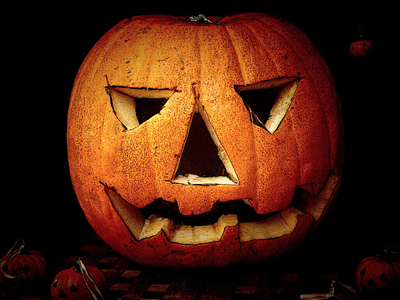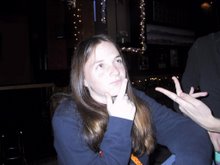
Today is an amazing holiday. Especially being in the middle school, I get so happy when I see younger kids get all excited and into this holiday. I remember how ecstatic I used to be when I was young on Halloween. It's such a fun, special night where you can dress up and be anyone you want to be.
In my last post, I was talking about how strange traditions are and how we got to where we are now. Halloween is weird too--how did it get started? Where did these traditions and systems begin, and how did they evolve to what they are today?
I looked up some information online about the history of Halloween and some statistics/facts. Check them out; they're interesting:
HISTORY
-Halloween has its origins in the ancient Celtic festival known as Samhain. The festival of Samhain is a celebration of the end of the harvest season in Gaelic culture, and is sometimes regarded as the "Celtic New Year."
-Traditionally, the festival was a time used by the ancient Celtic pagans to take stock of supplies and slaughter livestock for winter stores. The ancient Gaels believed that on October 31, now known as Halloween, the boundary between the alive and the deceased dissolved, and the dead become dangerous for the living by causing problems such as sickness or damaged crops. The festivals would frequently involve bonfires, into which bones of slaughtered livestock were thrown. Costumes and masks were also worn at the festivals in an attempt to mimic the evil spirits or placate them.
-The term Halloween is shortened from All Hallows' Even (both "even" and "eve" are abbreviations of "evening," but "Halloween" gets its "n" from "even") as it is the eve of "All Hallows' Day," which is now also known as All Saints' Day.
-The first Halloween celebration in America took place in Anoka, Minnesota in 1921.

COSTUMES
-BIGresearch conducted a survey for the National Retail Federation in the United States and found that 53.3% of consumers planned to buy a costume for Halloween 2005, spending $38.11 on average (up $10 from the year before).
-They were also expected to spend $4.96 billion in 2006, up significantly from just $3.3 billion the previous year
GAMES
-Some games traditionally played at Halloween are forms of divination.
-In Puicíní (pronounced "poocheeny"), a game played in Ireland, a blindfolded person is seated in front of a table on which several saucers are placed. The saucers are shuffled, and the seated person then chooses one by touch; the contents of the saucer determine the person's life during the following year. A saucer containing earth means someone known to the player will die during the next year; a saucer containing water foretells emigration; a ring foretells marriage; a set of Rosary beads indicates that the person will take Holy Orders (becoming a nun or a priest). A coin means new wealth, a bean means poverty, and so on.
-In 19th-century Ireland, young women placed slugs in saucers sprinkled with flour. A traditional Irish and Scottish form of divining one's future spouse is to carve an apple in one long strip, then toss the peel over one's shoulder. The peel is believed to land in the shape of the first letter of the future spouse's name. This custom has survived among Irish and Scottish immigrants in the rural United States.
-Unmarried women were frequently told that if they sat in a darkened room and gazed into a mirror on Halloween night, the face of their future husband would appear in the mirror. However, if they were destined to die before marriage, a skull would appear.
INTERESTING STATISTICS
-Jerry Ayers of Baltimore, Ohio has the record for the fastest pumpkin carver at 37 seconds.
-More than 93% of children, under the age of 12, will go out trick-or-treating.
-About 50% of adults dress up for Halloween, while 67% take part in the activities, such as parties, decorating the house and trick-or-treating with their children.
-86% of Americans decorate their house for Halloween.
-Halloween candy sales average about $2 billion annually in the United States. It is the largest candy-purchasing holiday, bigger than Christmas, Easter and Valentine's Day!
-The first Halloween card was made in the early 1920's. These days, over 28 million Halloween cards are sent each year. U.S. consumers spend about $50 million on Halloween greetings.
-Over $1.5 billion is spent on costumes each year and more than $2.5 billion on other Halloween paraphernalia.
-About 99% of pumpkins that are marketed domestically are turned into jack-o-lanterns.
-90% of parents admit to sneaking goodies from their kids' Halloween trick-or-treat bags.
-Over 10% of pet owners dress their pets in Halloween costumes.
-The biggest pumpkin in the world tipped the scales at a whopping 1,446 pounds. This gigantic gourd was weighed in October 2004 at a pumpkin festival in Port Elgin, Ontario, Canada.
-More than 35 million pounds of candy corn will be produced this year. That equates to nearly 9 billion pieces - enough to circle the moon nearly 4 times if laid end-to-end.
So, what do you think of Halloween or any of these interesting facts or statistics?


No comments:
Post a Comment